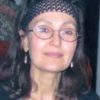
THINKING IN A NEW WAY—Overcoming Habits (Part 2 of 6): Finding our Source of Power
Selma Gokcen
“You translate everything, whether physical, mental or spiritual, into muscular tension.”
It is not the degree of ‘willing’ or ‘trying’, but the way in which the energy is directed, that is going to make the ‘willing’ or ‘trying’ effective.”
The stiffened necks and arms of people of today are outward signs of the imperfect development and lack of coordination of the muscular system of the back and spine.
—F.M. Alexander
Any athlete, and I include musicians here, who is aiming for the top level of performance is by definition working to improve their coordination, timing, balance and accuracy of movement. But musicians have another reason for wanting a reliable ‘instrument’ (I refer here to their own body, not their musical instrument). We want the freedom to immerse ourselves in the music and to have a technique that responds to our finest and highest musical impulses, to be able to communicate our vision of the musical score and the song that lies within our heart. Stephen Spielberg calls it mastery of your craft. Craft is the vessel for the imagination, in any art form, and all the more so in performance art, where there is no editing.
Patrick Macdonald said that in the Alexander Technique we do not direct the body but the energy that flows through the body. Years of work in the Technique permit us to come into contact with a powerful force of energy that can be directed through our attention. The ability to direct is the result of training the attention in a certain way, and it is this training that I find of immense benefit to young musicians. It takes the focus, not only in technical work but also in our repertoire practice, beyond the arms, hands and fingers to the total self, at every moment. It opens the way for the music to pass through us, instead of being trapped in a perpetual pattern of tension and contraction. We become free to hear, to sense, to speak the music.
I begin with my pupils as my teacher began with me, exploring where the back is. Strange to say, most of us in our modern age have little awareness of the back. Unless we are working the land, spending our days dancing or in sport, or climbing mountains, we are engaged in modern pursuits that do not cultivate awareness of the back at all. Sitting at a computer, texting, riding in a car or subway train, watching a movie, eating, practicing or playing hours at a stretch…think of how you pass your day. Our attention is primarily occupied by what is in front of us. Our back is behind us and we give it little or no thought…until, that is, it starts to hurt. So the first six months to a year of work in my studio is devoted to simple procedures where the pupil can experience their back and its power. I call it building a back, and I don’t speak only of muscular power but the power of the attention which arises through the spine, the ‘attention highway’ of the back.
In Alexander work, the relationship of the head to the back and spine is fundamental: in a well-coordinated body, the balance of the head relative to the back is forward (there is more weight forward of the balance point of the head than there is behind it) and the head’s internal direction is continually moving up of the spine (meaning not pulled down into the spine). This relationship is primarily affected by tension in the neck, which afflicts cellists to an alarming degree. Here is where the value of quietness discussed in Part 1 comes into play. Quietness begins to allow us to experience letting go in the neck. As the neck releases, the head can find its proper and natural balance.
Back to our back, our source of power.
The back must stay back all the time. What does this mean? It is hard to describe without the experience being given with my hands, but I will try. The moment we move to do something, the back tends to go forward in an instantaneous response to our intention, while simultaneously the head goes slightly back and down, producing a contraction in the spinal column. Alexander teachers are able to prevent this contraction and to replace it with a lengthening throughout the spinal column so that the head balances freely atop the spine at all times, opening out the attention and sharpening all the senses.
Training the back means training the mind to think of going against the teacher. The teacher provides the student with a stimulus to go forward in very simple ways: moving forward in a chair, learning to come forward holding onto either side of a door at the handles, coming forward holding a rope or a barre. And the student learns not to go forward with the teacher but to leave the back back, quietly listening, waiting and learning to let the energies of the body come into play. The large muscles of the back are extraordinarily powerful and provide the arms and hands with what they need to function. As long as the back stays back when the arms go forward to do their work, we will have what we need to play. Opposition creates balance and balance gives birth to power.
My students over time learn to use their arms as levers with the back supplying the power. Instead of tightening the arms to produce power, they can call upon the back for whatever they require. The back is also involved in proper weight transference, along with the pelvis. I have a series of exercises which, once the back is working well, I introduce to cellists to help them with their bow arm, but that is for Part 3.
Subjects: Playing Healthy
Tags: ability, Alexander Technique, attention to detail, bow arm, cellists, cello, cellobello, creating balance, cultivate awareness, energy flowing through the body, Gokcen, Habits, instrumentalists, Listening, music, musicians, opposition, Part II, powerful force of energy, proper weight transfer, quietness, relationship of the head back and spine, Selma, sharpening the senses, Six Part Series, tension in the neck, the back, Thinking in a new way, top level performing, trying, well-coordinated body, willing
